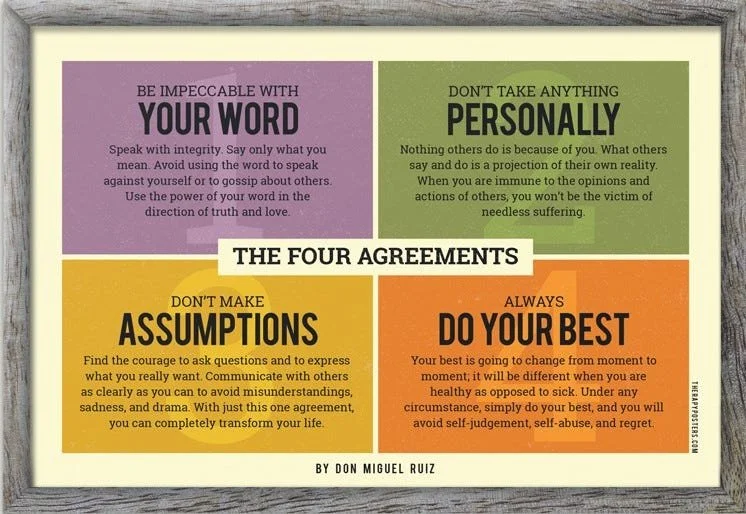All the growth you achieve in life whether is professional or personal, starts with one thing: Self-knowledge.As we begin 2019, whether you want to strengthen your relationships, improve your job or enhance your health — you can’t do it without knowing yourself.
Partnerships Move at the Speed of Trust: One Thing That Changes EVERYTHING
Partnerships and Polarity Management
“The test of a first-rate intelligence is the ability to hold two opposed ideas in mind at the same time and still retain the ability to function.” - F. Scott Fitzgerald.We all tend to see the difficulties we encounter at work and in life in general as problems we must solve. We come by this tendency honestly through formal education and through learned experience where we told to look for “the answer” to our problems.
Embracing Inherent Partnership Tensions
This past spring I participated in a conference on “Inherent Tensions in Networks”. The main theme was get comfortable with being uncomfortable when working in partnerships. When I work with partners I use a diversity of concepts and methods to support and enhance their work, including design and systems thinking and group dynamics. But “Polarity Thinking”, is one framework I use regularly. Like yin and yang, polarities are interdependent values that support each other.
New Millennial Engagement Research
By Jocelyne Daw and Richard JanzenEvery nonprofit or community-minded organization is looking to pass the torch to the next generation, finding someone to take up “The Cause” and continue the good work. This work is vitally important to building and maintaining communities, helping the disadvantaged, and connecting us with like-minded people.
Reflections On My Partnership Brokers Training
Guest Blog - Rebecca Aird, Director Grants and Community Knowledge, Ottawa Community FoundationIn February this year, I participated in a 4-day training course by the Partnership Brokers Association. Participants included reps from post-secondary institutions, government agencies, funders, and not-forprofit organizations.
Conditions for Effective Partnerships
By Jocelyne DawEveryone talks about partnership. But talking about collaboration isn’t the same as doing it. Genuine collaboration is hard, especially when it requires working across sectors and systems. Ineffective partnerships can be wasteful and challenge traditional power dynamics. It can be regarded more as a charming concept than as a legitimate practice to improve outcomes. Partnering isn’t the clear answer to every problem.
Shifting the Funder's Partnership Paradigm
Donors increasingly play a critical role in funding cross-sector collaborations. In fact, many require “partnerships” for funding to be provided. They rightly belief partnerships can be innovative, far reaching, scalable and sustainable. But donors often struggle to appreciate the challenges and hard work involved in true partnerships. And while their intentions are genuine, practice suggests funder driven partnerships have often stifled rather than optimized multi-stakeholder collaborations.
The time is now. Cross-sector collaboration as a ‘seed’ for renewing the world.
“Partnering and collaboration are critical… if we are to create a more inclusive and sustainable world.”It is not a not a lone voice making this claim.I’d even venture to say the idea – that cross-sector collaboration is required to address the challenges facing the world – is just about mainstream.Which is not to say we’ve all worked out how to do it.Otto Scharmer, author of ‘Theory U’ and Co-Founder of U.lab writes regularly in the Huffington Post.
Diversity in Partnerships Is Uncomfortable – And That’s Good!
In the coming years the community landscape will look dramatically different. Growing demands on resources and increasingly complexity of issues will require bridging traditional and untraditional boundaries to create powerful partnerships for social change. As a result, diversity will be inevitable. As different backgrounds, experiences and perspectives get blended, cognitive diversity will increase. Cognitive diversity is defined as the differences in our thought and problem-solving processes.








